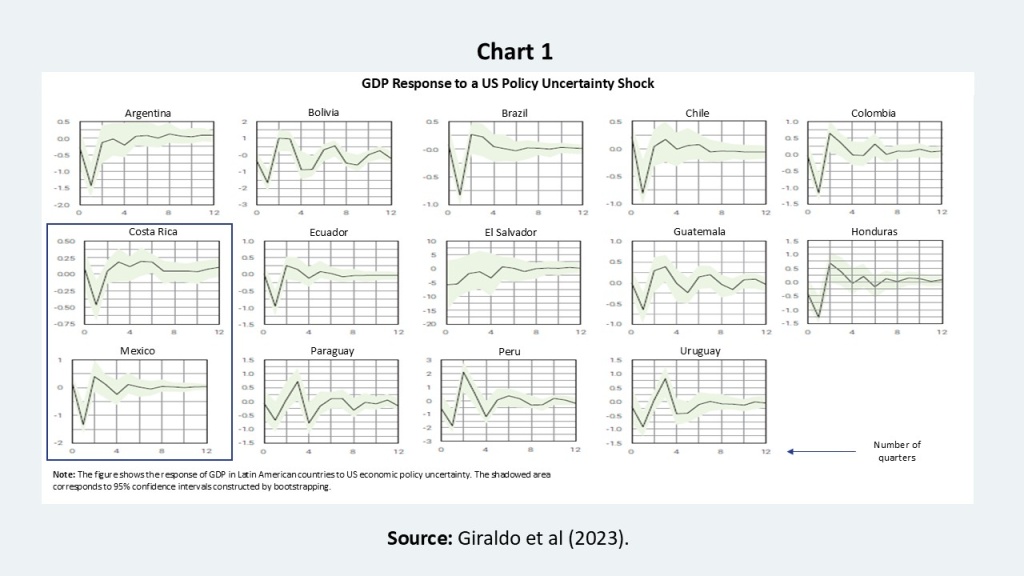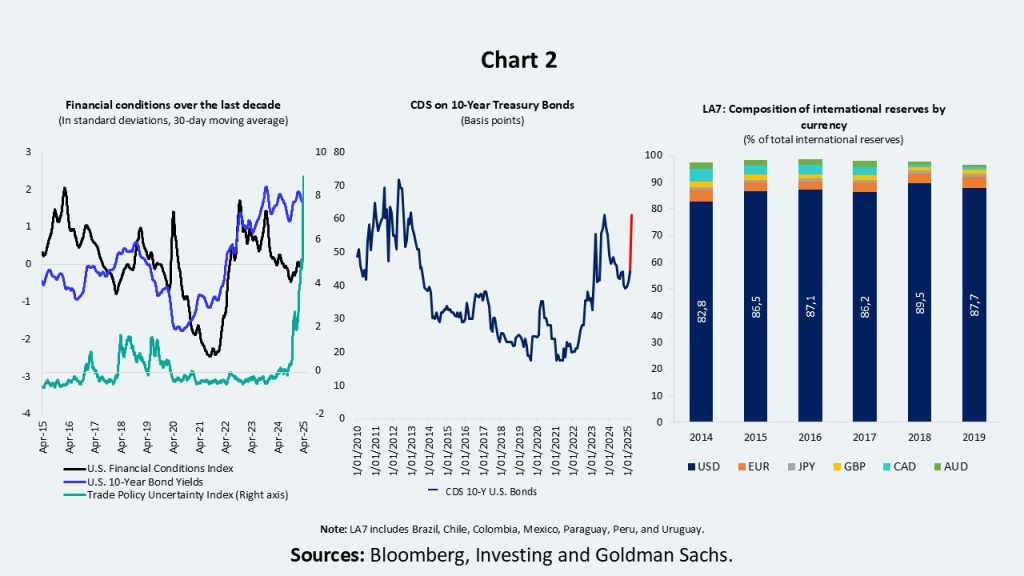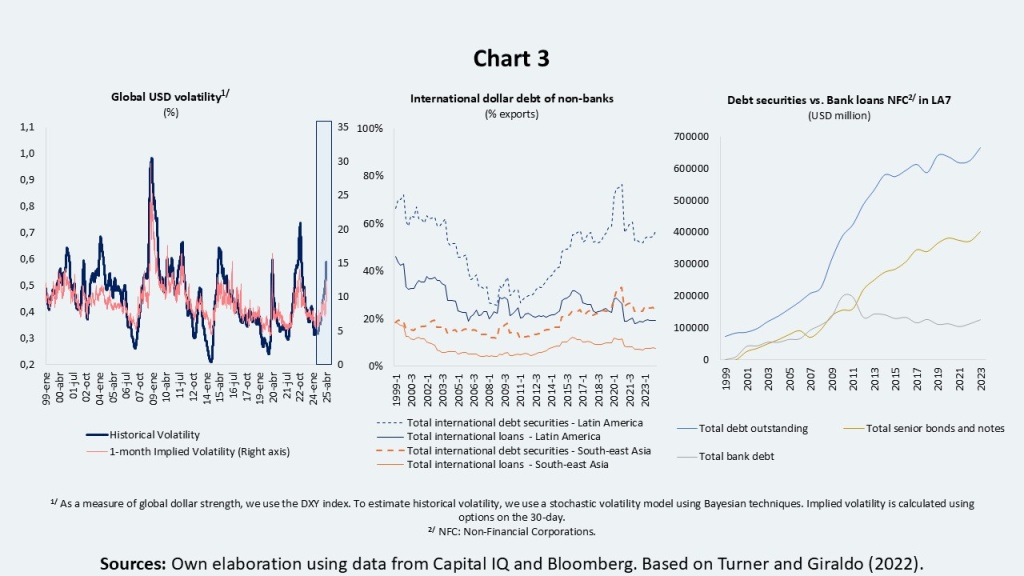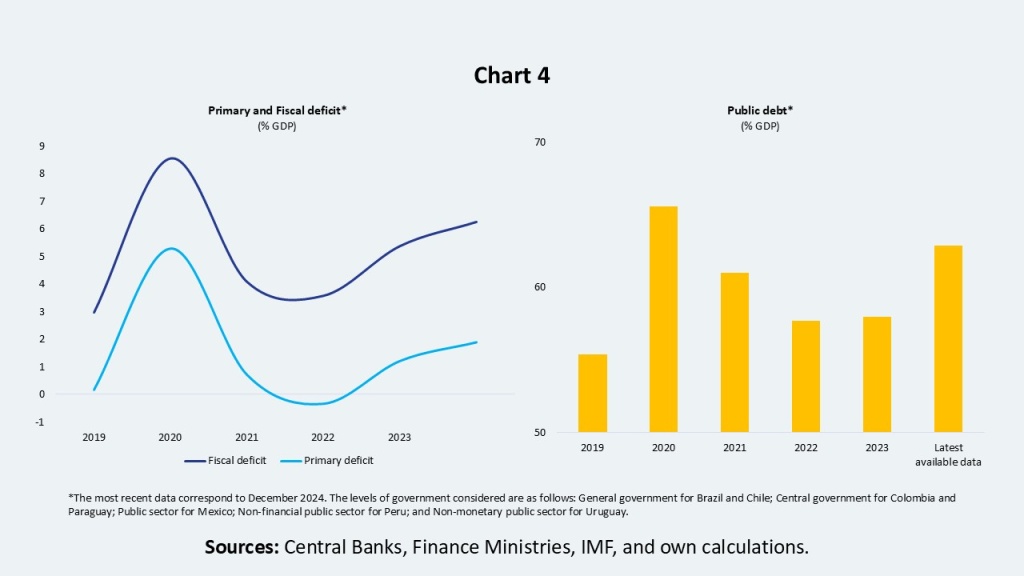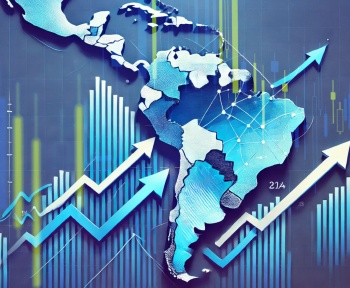Author:
Carlos Giraldo, Chief economist – FLAR.
1 I would like to thank Valeria Saldaña and Pablo Ruiz for their support with the information used in the presentation and blog, as well as José Darío Uribe, Andrea Villarreal, and Iader Giraldo for their valuable comments.
2 The views and opinions expressed are the sole responsibility of the author and do not reflect those of FLAR or its governing bodie.
Latin America and the Caribbean (LAC) face a complex global landscape characterized by geopolitical shifts, trade fragmentation, and heightened uncertainty. Within this environment, the growing trend of nearshoring—the relocation of production activities closer to consumer markets—emerges as a potential source of economic dynamism. However, realizing this opportunity in a sustainable manner requires more than just geographic proximity. It demands sound macroeconomic fundamentals, institutional capacity, and strategic vision.
These were the key themes discussed during the workshop “Geopolitical Shifts and Economic Integration in Latin America and Europe”, jointly organized by the Bank of Spain and the World Bank on May 9 in Madrid. Below is a summary of the main messages.
The nearshoring narrative has gained momentum in recent years, particularly following the imposition of tariffs by the United States and the escalation of trade tensions with China. In the region, Costa Rica stands out as a success story, where strong institutions, skilled human capital, and effective public-private coordination converged to attract foreign direct investment (FDI). Investment flows not only brought capital but also triggered structural transformations and productivity gains, dispelling concerns about immiserizing growth.
However, conditions across the region vary significantly. While Mexico and parts of Central America exhibit deep integration into U.S.-centered value chains, others face more substantial challenges in attracting and retaining FDI. The region’s potential to benefit from nearshoring remains highly heterogeneous.
Uncertainty as a Binding Constraint
Amid the optimism surrounding nearshoring, it is essential to acknowledge the prevailing environment of elevated global uncertainty. Our recent research in FLAR (U.S. Uncertainty Shocks, Credit, Production, and Prices: The Case of Fourteen Latin American Countries) shows that political and economic uncertainty shocks originating in the United States have a significant impact on Latin American output, primarily through trade and investment channels.
These shocks—persistent even after the partial reversal of tariffs—tighten credit conditions and deter private investment. Indeed, countries well-positioned to benefit from nearshoring, such as Costa Rica and Mexico (see Chart 1), are among the most exposed to these external risks.
Macro-Financial Vulnerabilities and Limited Policy Space
A less visible but critical source of vulnerability stems from high levels of U.S. dollar-denominated external debt in the non-financial corporate (NFC) sector across several LAC economies. This exposure can become highly costly during periods of increased dollar volatility (Chart 3).
A Necessary Condition: Macro-Financial Stability
Against this backdrop, the message is clear: macroeconomic and financial stability is a prerequisite for translating nearshoring into sustainable growth. International investors require credible assurances regarding the preservation of capital, which hinges on sound fiscal and monetary frameworks, effective prudential policies, and robust institutions.
Planting Seeds in Fertile Ground?
Nearshoring presents a real opportunity for some economies in the region. Yet, without coherent national strategies, institutional readiness, and macro-financial stability, it may ultimately become a missed opportunity.
As suggested by both empirical evidence and the literature on uncertainty shocks, the countries that will succeed in transforming this moment into a development engine will be those combining strategic vision with solid macroeconomic fundamentals.
Reference
Giraldo, Carlos; Giraldo, Iader; Gomez-Gonzalez, Jose; Uribe, Jorge (2025). US uncertainty shocks, credit, production, and prices: The case of fourteen Latin American countries. Research in International Business and Finance. Volume 78, June.
Turner, Philip; Giraldo, Iader (2022). The dollar debt of companies in Latin America: the warning signs. FLAR Working Paper. February.


